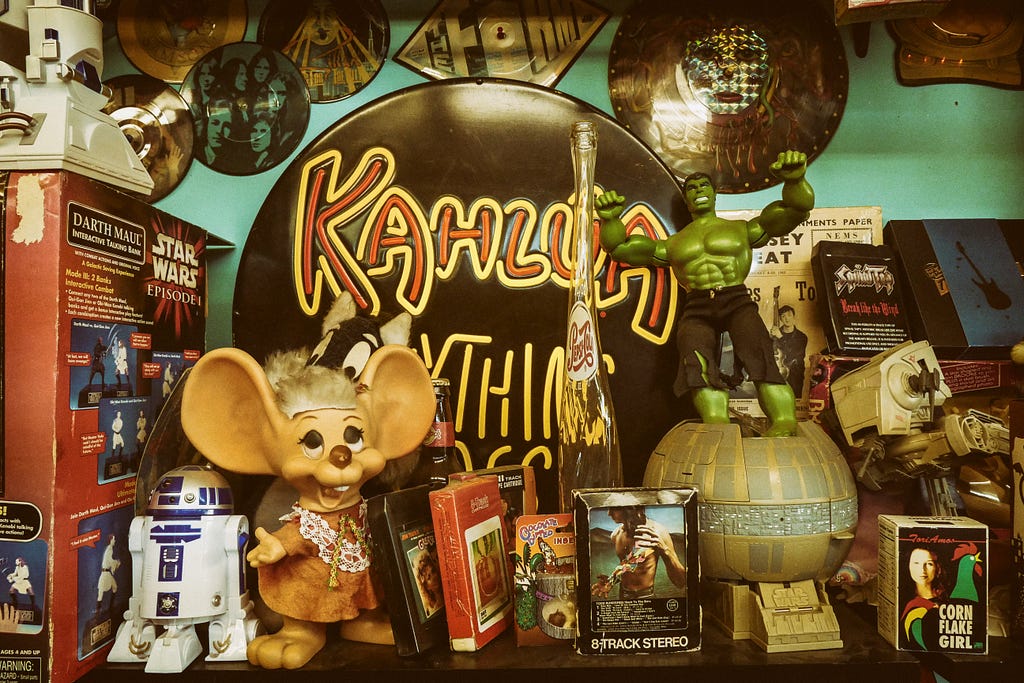Blog
‘Why the hype’ – The story of the greats: Pokémon — part 2
‘Why the hype’ – The story of the greats: Pokémon — part 2 — The rarest Pokémon retro games and collectibles and why Pokémon is still a big deal From childhood favorite to collector’s treasure Pokémon has always been about more than just playing the games — it’s about collecting and holding on to a piece of childhood. Over the years, some Pokémon games have become more than just nostalgic experiences — they’re now high-value items in the collector’s market. In this episode, we’ll explore which Pokémon games and collectibles are the rarest and most valuable, and why they hold such significance in the retro gaming world. Pokemon Heart Gold & Pokemon Soul SilverThe rarest Pokémon games: Gems in the retro market When it comes to rare Pokémon games, certain titles stand out in the retro gaming scene for their scarcity and value: Pokémon Box: Ruby & Sapphire (GameCube): A storage utility game that was released in limited numbers, this title has become one of the most sought-after Pokémon games on the market. It allows players to store thousands of Pokémon from the Ruby and Sapphire versions, making it a unique piece of Pokémon history. Pokémon Yellow special Pikachu edition (sealed): While Yellow was widely available during its release, sealed copies in mint condition have become incredibly valuable. Collectors are drawn to the nostalgic appeal of playing alongside Pikachu, and prices for sealed copies have reached thousands at auctions. Pokémon HeartGold & SoulSilver (Nintendo DS): While these remakes of the beloved Gold and Silver versions aren’t as old as some other entries, their special packaging, including a Pokéwalker accessory, has made them highly collectible, particularly in mint condition. Why Pokémon games hold value: Scarcity and nostalgia Sealed versions of these games are highly sought after, and the reason is simple: scarcity. As physical copies of older Pokémon games become harder to find, their value rises, especially when they are in pristine, sealed condition. But it’s not just scarcity that drives value — nostalgia plays a huge role too. For many retro collectors, these games aren’t just pieces of plastic; they’re artifacts of their childhood. Owning a sealed copy of Pokémon Red or Yellow is like preserving a piece of gaming history, a tangible reminder of simpler times spent exploring the Pokémon world. This emotional connection is what continues to fuel the retro gaming market, especially when it comes to Pokémon. Pokémon trading cards: Rare cards that add to the hype The Pokémon Trading Card Game is another arena where value and rarity come into play. Certain cards, like the original holographic Charizard, have reached legendary status among collectors. First edition shadowless cards, especially from the base set, have sold for tens of thousands of dollars. Cards and games go hand in hand when it comes to building the Pokémon legacy. While the games provide the interactive experience, the cards offer another layer of collecting, and some fans take pride in owning both rare games and rare cards from their favorite franchise. Pokémon’s future in retro gaming and collecting Pokémon is more than a retro game — it’s an evolving franchise that continues to release new titles while also paying homage to its roots. With each new generation, the demand for older games and rare collectibles grows. As the gaming community becomes more involved in retro game collecting, Pokémon’s position as a valuable and nostalgic brand is only going to strengthen. Why Pokémon will always be a big deal From rare games to highly coveted trading cards, Pokémon’s presence in the retro gaming market shows no signs of slowing down. Its unique blend of nostalgia, collectibility, and timeless gameplay has solidified its status as a franchise that transcends generations. Whether you’re a die-hard collector or simply someone who grew up with these games, Pokémon continues to hold a special place in both gaming history and the hearts of fans around the world. ‘Why the hype’ – The story of the greats: Pokémon — part 2 was originally published in Golisto on Medium, where people are continuing the conversation by highlighting and responding to this story.

‘Why the hype’ — the story of the greats: Pokémon — Part1
‘Why the hype’ — the story of the greats: Pokémon — Part 1 The rise of Pokémon — a retro video game icon Why Pokémon is More Than Just a Game Pokémon isn’t just a series of video games — it’s a global phenomenon that has captivated fans across generations. Whether through games, trading cards, TV shows, or movies, Pokémon has managed to embed itself into the very fabric of popular culture. But for retro gamers, the franchise’s humble beginnings on the original Game Boy hold a special place. From those iconic first titles, Pokémon became a defining brand in both the gaming world and beyond. In this episode, we’ll explore what made Pokémon so big, how its early games shaped the retro gaming scene, and why it continues to draw in fans today. 1996: The Birth of a Legend Pokémon’s journey began in 1996 with the release of Pokémon Red and Green in Japan, developed by Game Freak and published by Nintendo. The creator, Satoshi Tajiri, drew inspiration from his childhood passion for collecting insects, designing a game that encouraged exploration, capturing, and training fantastical creatures known as Pokémon. This simple yet engaging concept sparked a revolution in gaming. The use of the Game Boy’s link cable allowed players to trade and battle Pokémon with friends, adding a social element that was rare at the time. It wasn’t just a solo adventure — you had to connect with others to “catch ’em all.” This aspect of collaboration and competition was key to Pokémon’s early success. Pokémon in retro gaming: Classic titles that shaped a generation For retro gamers, the original Pokémon games — Red, Blue, and Yellow — are cherished classics that shaped their gaming experiences. These titles introduced players to a world filled with strange creatures, from the powerful Pikachu to the elusive Mewtwo. Each game had a clear objective: defeat the Gym Leaders, conquer the Elite Four, and become the Pokémon Champion. Beyond the main titles, games like Pokémon Crystal and Pokémon Gold & Silver expanded the universe, introducing new regions, day-and-night cycles, and even breeding mechanics. These innovations kept the gameplay fresh while maintaining the core appeal of catching and training Pokémon. The pixelated graphics, catchy 8-bit music, and simple yet deep strategy mechanics of these early games created a perfect mix for both young players and experienced gamers. Even today, these titles are highly sought after by retro gaming enthusiasts. Pokémon’s global explosion: How it took over the world When Pokémon hit the Western market in 1998 with Pokémon Red and Blue, it became a global sensation almost overnight. The franchise’s reach extended far beyond the gaming world, quickly expanding into an animated TV series, a trading card game, and a wide range of merchandise. For many fans, the animated series was their first introduction to the Pokémon universe. Ash Ketchum, the ambitious young trainer with his trusty Pikachu, became a cultural icon. The phrase “Gotta catch ’em all!” was on everyone’s lips, and soon enough, Pokémon cards were traded in schoolyards, and the games were on every Game Boy. The franchise’s combination of approachable gameplay, endearing characters, and a massive world of collectibles made it irresistible to fans of all ages. Pokémon’s world-building, with its diverse creatures and immersive lore, gave players a reason to stay invested in the franchise over the years. Pokémon as a collectible brand: From games to cards Pokémon’s success wasn’t just about the games — it also thrived as a brand built around collecting. In the games, the goal was always to capture and train all available Pokémon, but outside of the games, the Pokémon Trading Card Game became another massive part of the franchise. Rare cards like the original holographic Charizard became prized possessions, and trading cards soon held their own as a collectible market. In the retro gaming space, this collectibility has translated into a huge demand for early Pokémon games. Original, mint-condition versions of Pokémon Red, Blue, and Yellow are considered treasures by retro collectors. Sealed copies, especially, have sold for astonishing prices at auctions, sometimes fetching thousands of dollars. But it’s not just about value — owning these games is like holding a piece of gaming history, a reminder of simpler times when your main goal was to catch that last elusive Pokémon. Pokémon’s enduring legacy in retro gaming More than 25 years after its first release, Pokémon remains one of the most beloved franchises in the gaming world. Its influence on retro gaming culture is undeniable, as those early titles laid the foundation for not just the Pokémon universe, but also for a generation of gamers who grew up immersed in its world. From its unique multiplayer features to its status as a collectible icon, Pokémon continues to captivate both casual fans and dedicated collectors alike. In the next episode, we’ll dive deeper into the rarest and most valuable Pokémon games and collectibles, exploring how they’ve become high-value items in the retro gaming market. ‘Why the hype’ — the story of the greats: Pokémon — Part1 was originally published in Golisto on Medium, where people are continuing the conversation by highlighting and responding to this story.

Sealed video game market: The future of the market: Part 2
- trends, rarities, and what to expect next The sealed video game market has exploded in recent years, but as with any booming market, questions about its sustainability and future direction are starting to emerge. In this article, we’ll explore the trends shaping the market, some of the rarest and most valuable games across different consoles, and where experts believe the market is heading. The rarest sealed games across consoles When it comes to sealed video games, rarity is king. While there are countless games that hold value, a few stand out as particularly rare and sought after. Here are some of the most valuable sealed games across various consoles: Nintendo Entertainment System (NES): “Stadium Events” is often cited as one of the rarest NES games. Only a few sealed copies are known to exist, making it a holy grail for collectors. Another iconic game, “The Legend of Zelda,” remains a top collectible due to its cultural significance. Super Nintendo Entertainment System (SNES): The SNES has its own set of rarities, including “Chrono Trigger,” which is highly prized for its revolutionary gameplay and storyline. A sealed copy in excellent condition can sell for tens of thousands of dollars. Nintendo 64: “Super Mario 64” holds the record for the most expensive video game ever sold. The high value is attributed to the game’s influence and the pristine condition of the sealed copy that was auctioned. PlayStation: The original PlayStation has several valuable titles, such as “Suikoden II” and “Castlevania: Symphony of the Night.” These games are beloved by fans and have become increasingly difficult to find in sealed condition. Fun fact: The sealed video game market isn’t just limited to retro consoles. Even relatively recent games, like those for the PlayStation 2 and GameCube, are starting to see significant appreciation in value as collectors turn their attention to the early 2000s era. Market trends and potential challenges As the sealed video game market has grown, so too have concerns about its future. One of the most notable trends is the potential for market stabilization or even a decline in prices. Some experts believe that the market may be cooling off after reaching unsustainable highs, as seen with the recent dip in auction prices for certain games. However, this doesn’t necessarily signal a crash. Instead, it may indicate a maturing market where speculative buyers are weeded out, leaving more serious collectors and investors. This could lead to a more stable and sustainable market in the long term. Another trend to watch is the increasing interest in sealed games from newer consoles. As the generation that grew up with PlayStation 2 and Xbox begins to reach its peak earning years, demand for sealed games from these consoles is expected to rise. This could lead to a broader and more diverse market, with value spread across a wider range of games and consoles. The role of online communities As the market evolves, online communities will continue to play a critical role. Platforms like the Sealed Games Market group on Facebook provide collectors with a space to share information, buy and sell games, and stay informed about market trends. These communities are not just social spaces but are also vital for the health of the market, offering transparency and facilitating transactions. Fun fact: Many of the biggest sales in the sealed video game market have been initiated or discussed within these online communities before hitting the auction block, showcasing the influence these groups have on the market. Where is the market headed? Looking ahead, the sealed video game market appears to be on a path towards further diversification. While retro games from the 1980s and 1990s will likely remain the most valuable, there is growing interest in more recent titles. Additionally, as more people become aware of the market, we could see an influx of new collectors and investors, bringing fresh capital and energy into the space. However, as with any market, caution is advised. The high prices and rapid growth of the sealed video game market have attracted speculative buyers, which can lead to volatility. Collectors are encouraged to focus on quality, rarity, and historical significance when making purchases to ensure they are investing in items that will retain their value over time. Conclusion The sealed video game market is a fascinating intersection of nostalgia, pop culture, and investment. Whether you’re a seasoned collector or new to the scene, understanding the trends, knowing the rarities, and being part of a community like Sealed Games Market can help you navigate this exciting and rapidly evolving market. As the market matures, it will be interesting to see how it develops and what new opportunities arise for collectors and investors alike. Sealed video game market: The future of the market: Part 2 was originally published in Golisto on Medium, where people are continuing the conversation by highlighting and responding to this story.
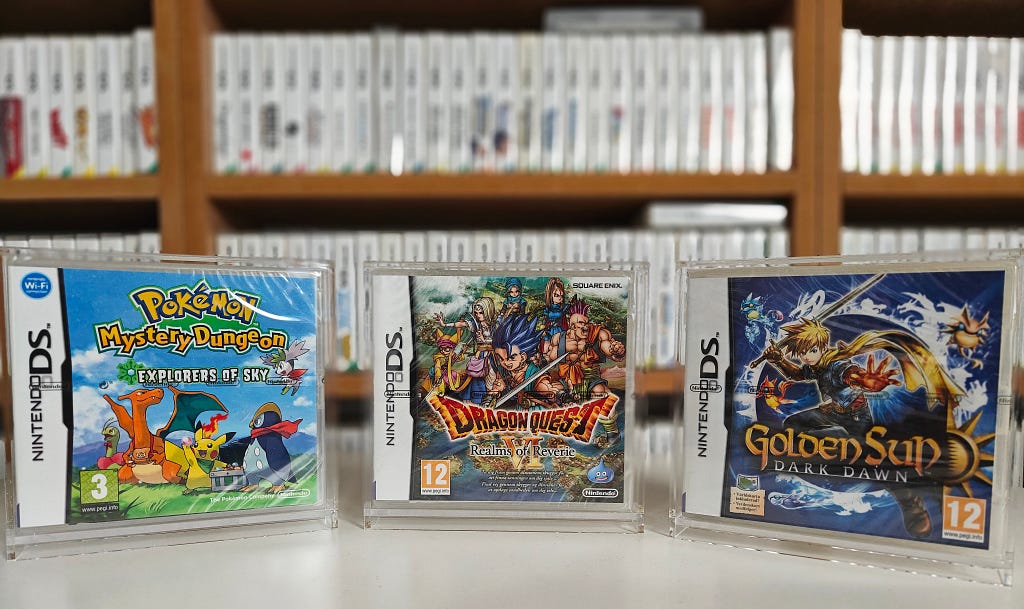
Sealed video game market: The rise of the market: Part 1
- a modern-day collectible boom Introduction In the world of collectibles, few markets have seen as rapid a rise as the sealed video game market. What was once considered a niche interest has blossomed into a full-fledged investment category, drawing in collectors, investors, and gaming enthusiasts alike. But what exactly is the sealed video game market, how did it emerge, and why are people spending millions on games that they may never even play? The origins of the sealed video game market The sealed video game market refers to the buying and selling of video games that are still in their original, unopened packaging. This market began to take off in the early 2010s, fueled by nostalgia for the golden age of gaming in the 1980s and 1990s. As retro gaming became more popular, collectors started to see the value in games that had remained untouched since their release. One of the earliest and most significant milestones in the market was the 2019 auction of a sealed copy of “Super Mario Bros.” for the NES, which sold for over $100,000. This sale caught the attention of the broader collecting community and marked the beginning of what would become a booming market. Comparisons to other collectible markets The sealed video game market shares many similarities with other collectible markets, such as art, comic books, and rare coins. Like these markets, the value of sealed games is driven by factors like rarity, condition, and historical significance. For example, a sealed copy of “Stadium Events” for the NES, one of the rarest games in existence, can fetch upwards of $50,000. Fun fact: Did you know that the sealed video game market is sometimes compared to the art market? Just as a painting’s value can skyrocket due to its rarity and the artist’s legacy, so too can a video game’s value rise based on its cultural impact and scarcity. The role of grading companies Another key factor in the rise of the sealed video game market is the role of grading companies like WATA and VGA (Video Game Authority). These companies assess the condition of sealed games and assign them a grade, which can significantly impact their value. A game with a high grade, such as a 9.8 or 10, can command much higher prices than one with a lower grade. For instance, a sealed copy of “Super Mario 64” graded 9.8 by WATA sold for a staggering $1.56 million in 2021, setting a new record for the most expensive video game ever sold. This sale highlighted the growing demand for top-tier collectibles and solidified the role of grading in the market. The impact of pop culture and nostalgia Nostalgia plays a huge role in the sealed video game market. Many buyers are now adults who grew up in the 1980s and 1990s, during the height of the gaming boom. These individuals are often looking to recapture a piece of their childhood, and owning a sealed copy of a beloved game is one way to do that. Moreover, the rise of video game culture in mainstream media has further fueled interest in this market. Games like “The Legend of Zelda,” “Super Mario Bros.,” and “Pokemon” are not just games; they are cultural icons. The value of these games is not just monetary but also emotional, as they represent a connection to the past. Fun fact: The original “Super Mario Bros.” for the NES is often considered the “Mona Lisa” of video games, not just because of its historical importance, but also due to its significant impact on the gaming industry as a whole. Community and collecting groups The rise of the sealed video game market has also led to the formation of vibrant online communities where collectors can share their passion, trade games, and discuss the latest market trends. One of the most active groups is the Sealed Games Market on Facebook. This group has become a hub for enthusiasts, offering a space to connect with like-minded individuals and stay updated on market developments. Communities like Sealed Video Games Collectors and Investors play a crucial role in the market, offering advice, support, and a platform for trading games. For anyone looking to get involved in the sealed video game market, joining such a group can be an invaluable resource. Wanna know about trends, rarities, and what to expect? Read part two here: nexthttps://golisto.com/blog/cdbcf3ea732f/Sealed_video_game_market%3A_The_future_of_the_market%3A_part_2 Sealed video game market: The rise of the market: Part 1 was originally published in Golisto on Medium, where people are continuing the conversation by highlighting and responding to this story.
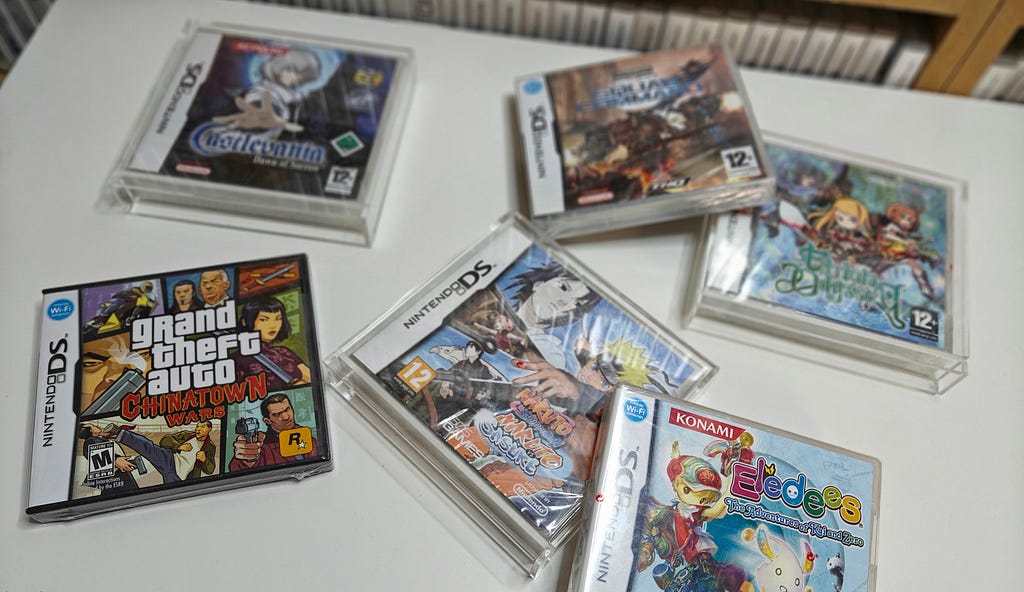
A beginner’s guide to video game collecting: Part 4
— The Ultimate A-Z Video Game Collecting Dictionary Welcome to the world of video game collecting! As a collector, understanding the lingo is crucial. It helps you get exactly what you’re looking for and ensures you know what you’re buying. Here’s a comprehensive A-Z dictionary of video game collecting terms to get you started. A Artist — The person behind the game’s original box artwork. B Baggie — A plastic bag in which most cartridge games were originally packed.Black Box — The original first line of NES games came in black plastic boxes.Board — Circuit board. C Cart — Abbreviation for game cartridge.Certification ID — Number that corresponds to a specific game certified by Wata.CIB — Complete In Box.Clamshell — Plastic game box type that snaps open and shut, e.g., Sega Megadrive games.Color Touch — Ink applied to a video game box or manual after manufacturing to cover up defects.Competition Cartridge — A game used in a competition, usually limited to a specific country/region.Console — Video game system (normally for use with a TV).Counterfeit — Game components created by someone other than the original publisher to resemble the original deceitfully.Country of Origin — A game component’s location of production.Crease — Fold in a manual or box that may or may not break the color printed on the fold. D Database ID — Number corresponding to a particular game in the Wata database.Details — Basic historical significance of a game listed on Wata’s matrix code and printed on games with 3D labels.Disc — Medium for a game contained on a CD/DVD/Blu-Ray/etc.Donor/Recycled — Used original game components salvaged for use in another project, usually a homebrew or reproduction game.Dust Cover/Sleeve — Piece that comes with some cartridge games used for storage and to prevent dust and damage to the pin connectors of the exposed circuit board. E Endlabel — Part of the label on some cartridge games that wraps around the end, making the game title visible when stacked.Error — A factory flaw or mistake that is not a variant but is unique and unintentional.Exclusive — Variant of a game that is only available through a specific channel. F Factory Sealed/Sealed — Video game in the same sealed condition as when it left the factory.Fiber (%) — Recycled material percentage listed on some Nintendo boxes, creating a minor variant.First-party — Game components made by the company that manufactured the system the game is made to play on.Foil — Metallic printing on certain variant game components. G Game Component — Main pieces that comprise a CIB: the Cart, Manual, and Box.Game Specific Insert (GSI) — Insert, such as a poster or map, specific to only one game. GSIs add value to a CIB.Grade Details — Information listed on Wata’s matrix code and 3D labels containing component grades, seal rating, and other notes pertinent to a game’s condition.Grading/Certification — Process of impartially and professionally assessing a game’s authenticity, contents, and condition, assigning a grade using objective standards.Grading Scale — Numerical scale used to quantify the condition of a video game. Wata’s scale ranges from 0.5 to 10.0 with 23 levels.Greatest Hits/Platinum Hits/Player’s Choice/Etc. — Low price reprints of a system’s best-selling games to drive more sales, creating unique variants. H Hack — A game created by altering an existing game’s code to create unique characters or levels with the same basic gameplay mechanics.Handheld — A portable video game system, convenient for travel.Hangtab — Video game box manufactured with die cuts on the back to hang the game on a hook for display or sale, characteristic of early NES boxes. Also refers to a thick plastic sticker placed on the back of a game for the same purpose.Homebrew — Video game made by an individual or small group as a passion-driven endeavor, released in limited quantities through non-commercial/retail channels. I Incorrect Married Part (IMP) — A game component from a different title or print variant than the one it is included with.Inner Box — A structural or centering piece that holds the contents inside a game’s box.Insert — Various pieces originally included inside a game’s box outside of the cart, disc, or manual. K Kiosk Demo — Game used at store kiosks for demonstration purposes. L Label — Sticker placed on a cartridge to identify a game. Also used to describe the information portion of a Wata holder.Licensed — Game made under the license and approval of the console’s manufacturer.Loose — Cartridge only, without other game components.Longbox — Box variant type named for its extended length compared to most standard box sizes. M Manual — Instruction booklet included with a game that explains how the game is played, also called instructions.Married — CIB game with one or more components from different copies of the same game.Mock-up — Item made by a game publisher to preview the finished product for internal review or promotional purposes. Typically refers to a box. N NES — Nintendo Entertainment System.NES-GP — (Game Pak) Variant designation seen on the back of NES Black Box games.NES TM/R — Variant designation referring to the trademarking of the word “Nintendo Entertainment System” on the front of NES Black Box games.Not For Resale (NFR) — Specifically branded game or box, usually intended for kiosk demos, system pack-ins, or promotional use. P Pack-in — A game variant made specifically for inclusion with a game system or other peripheral.Pedigree — A game from a recognized collection with exceptional provenance, quality, size, or other unique outliers.Population — The number of known examples of a game or specified variant, usually filtered by state or grade.Port — Conversion of a game originally developed for a different console.Promotional Copy — Game designated as a premium for a specific reason, as a giveaway or redemption option.Prototype — Cartridge made by a game publisher for internal development and testing purposes.Publisher — Company that releases a game for sale; may be the same or different from the company that developed the game.Publisher Specific Insert (PSI) — Insert included by a game’s publisher for a series of games they have released. R Ramp — SNES cart design directly below the label on the front, open face.Rating — Evaluation of a game’s content by the ESRB, VRC, or other game rating board to act as a buyer’s guide for parents and consumers.Raw — A video game that has not been certified.Region — The country of release and compatibility for a game, not to be confused with the country of origin or where the parts were made.Reproduction (Repro) — Game components created by someone other than the game’s publisher to offer a cheaper substitute for the original, or fantasy pieces of games not released in different markets.Restoration — Video game component with material added (including color) to improve its appearance or repair damage.Rev-A — Revision A, denoting Nintendo’s change from a 5-screw cartridge design to a 3-screw design on NES game components. S Seal Rating — Wata’s grade assessment for a factory seal that covers a game’s box.Seam (Description) — The characteristic type or method used in the manufacturer’s factory seal for a given game (H-Seam, Y-Seam, V-Seam, etc.).Shell — Casing of the cartridge that houses the circuit board running the video game’s program.Slab — Certified video game in a case or holder.Slot — SNES cart design directly below the label on the front, slotted.SNES — Super Nintendo Entertainment System.SOQ — Seal of Quality, usually relating to Nintendo’s various forms used on NES games (Round SOQ, Oval SOQ TM, Oval SOQ R).Standard Insert — Insert included by the manufacturer inside games both published by first and third-party companies across many titles.State — Wata certifies games in three states: Sealed (factory sealed), CIB (complete in box), or Cart (loose cartridge).Sticker Seal — Alternative method of sealing a game rather than shrink wrap; the box is sealed with a small sticker.Styrofoam Block — Piece of Styrofoam inside a video game box that ensures the contents do not shift.System — Console, portable, or platform on which a game is compatible to play. T Test Cart — Non-retail cartridge used by repair sites to test video game components.Third-party — Game components made by a company other than the manufacturer of the system the game is made to play on. U Unlicensed — Game made without the approval or licensing of the console’s manufacturer.Unreleased — Game that was partially or fully developed but Now that you’ve mastered the lingo of a true retro game master, it’s time to dive deep into the sealed video game market: https://golisto.com/blog/d4e489de575c/Sealed_video_game_market%3A_The_rise_of_the_market%3A_part_1 A beginner’s guide to video game collecting: Part 4 was originally published in Golisto on Medium, where people are continuing the conversation by highlighting and responding to this story.
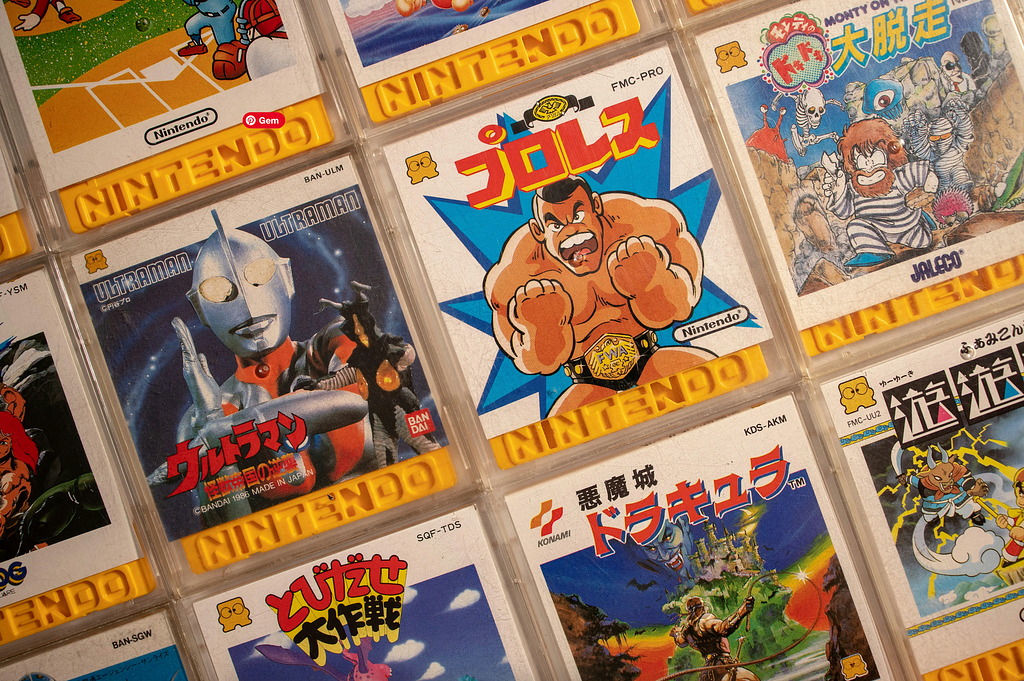
A beginner’s guide to video game collecting: Part 3
— Sega, Nintendo, and buying tips Welcome to the third part of our video game collecting guide. In this post, we’ll explore the unique appeal of collecting Sega and Nintendo games, and offer tips on where to buy video games. Sega Sega was always the more punk rock of the 90s consoles and as a result it has some truly iconic and bizarre titles to explore. Full of Nintendo castoffs and bloodily going where no Nintendo game had gone before you can find all sorts of weird and wonderful titles. (Seaman anyone?) Alongside this Sega boasts stone cold classics such as Streets of Rage, Gold- en Axe and the Sonic the Hedgehog series all of which can be easily found and very affordable. Sega can also be a fun console to collect due to its imagina- tive range of pioneering accessories. With everything from 3D Glasses for the Master System to the laser tag game Sega Lock On there is a wealth of accessories that don’t quite work to choose from. Nintendo Both Snes and N64 are popular consoles to start collecting these days as the generation who en- joyed them the first time round are now old enough to be nostalgic about the late 80s/90s. Nintendo have also produced some of the most classic titles of all time and every new collector wants to have them in their collection as a result. This essentially means most places you are looking at spending at least $40 for a copy of Mario Kart 64 loose and as much as $100 for Mario Party 3 complete. Many N64 collectors either start with the consoles themselves and then a few core games while oth- ers aim to own every official game released on the platform- at only 296 titles this isnt an unreachable goal. Where do I buy video games? As with most collectibles the best way to source items is to buy local. Seek out and get to know local dealers, and collectors, who might want to trade or can help you repair controllers and faulty cartridg- es if you cannot do it yourself. Buying online and conventions Check the grade (see collecting terms below) and know what you are looking for. Do you want to collect boxed games? Loose cartridges? Are they for playing as well as owning? Once you know this, buying online is easy. eBay can be a risky place to buy as many sellers are not collectors themselves and perhaps haven’t tested the games before listing online. Instead, we recommend seeking out Facebook groups, going to conventions in your country, or using platforms like Golisto.com, which is dedicated to retro game collectors. Any of these options can help you buy something specific or stumble upon something new you hadn’t expected to find. Now discover the final piece of the puzzle: The ultimate A-Z Video Game collecting dictionary: https://golisto.com/blog/bcb57984a215/A_beginner%E2%80%99s_guide_to_video_game_collecting%3A_Part_4 A beginner’s guide to video game collecting: Part 3 was originally published in Golisto on Medium, where people are continuing the conversation by highlighting and responding to this story.
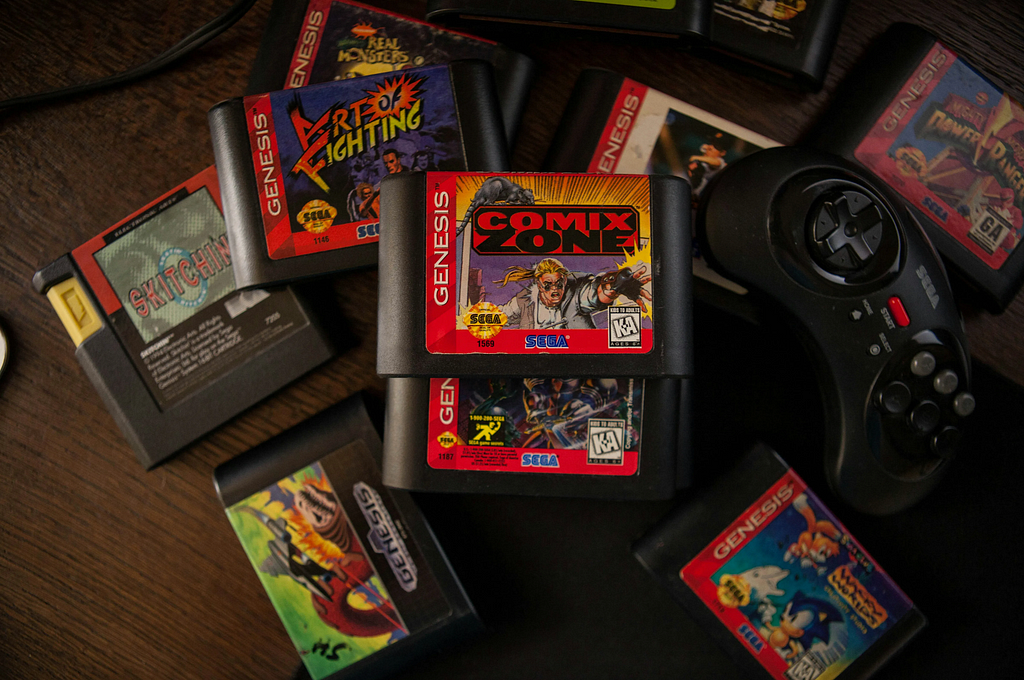
A beginner’s guide to video game collecting: Part 2
— Xbox, PlayStation, and genre choises Welcome to the second part of our video game collecting guide. In this post, we’ll dive into the specifics of starting your collection with Xbox and PlayStation games, and how to choose a focus based on genre. Xbox and PlayStation If you are considering starting with either Xbox or PlayStation, it is certainly an easy road to take. Most former PlayStation and Xbox owners see the disc format as entirely disposable. The sheer volume of titles produced (there are almost 4,000 PS2 games) means these games are everywhere, and you can often pick up most titles for anywhere between $5–10. Choosing a focus Genre — Are you into survival horror, platformers, or beat ’em ups? Find your niche and start from there. Classics — This is a common start for most collectors. Begin with the biggest, key titles like THPS2, Call of Duty, Tekken, and expand from there. Rarity — As with any collectible, there are plenty of rare titles. If your collecting dreams are full of the thrill of the hunt, make a list, prioritize, and most importantly, don’t overstretch your budget. Choosing a focus for your video game collection can help you stay organized and motivated. Whether you start with Xbox, PlayStation, or a specific genre, there’s a vast world of games waiting to be discovered. Ready to dive deeper into video game collecting? Check out our next guide to explore the world of Sega and Nintendo collections. Read the next episode for Sega, Nintendo, and buying tips: https://golisto.com/blog/5faa4a53fddf/A_beginner%E2%80%99s_guide_to_video_game_collecting%3A_Part_3 A beginner’s guide to video game collecting: Part 2 was originally published in Golisto on Medium, where people are continuing the conversation by highlighting and responding to this story.

A beginner’s guide to Video Game collecting: Part 1
“It’s the thrill of the search, design, and nostalgia. It’s the thrill of searching for the games that are missing in my collection. The design of the machines and the retro cover art of the games. I just think it’s all cool. The nostalgia of playing the same games I played as a kid. For me, that’s the very essence of nostalgia.” — Michael Westergaard Gudmann — Getting started Welcome to the first part of our beginner’s guide to video game collecting. Whether you’re a seasoned gamer or a newcomer, this guide will help you start your collection the right way. Considerations before starting The main issue with collecting video games, as with most collecting hobbies, is space to house your collection. Games and consoles take up a lot of space, especially if they are boxed. Ask yourself these questions first: Do you have the space? Does your significant other support your decision? Do you have the money to support the hobby in the long run? If you answered yes to all of the above then you can start thinking about what you are going to collect. Finding your focus The answer to what you should collect often comes through nostalgia. Do you have a burning desire to finally complete Super Ghouls and Ghosts? Do you want to become a Tetris master? Or maybe you want to recapture the feeling of playing Sonic with your siblings. Whatever the reason, we’re here to help you get started on your quest. Just like when you were a child and you declared allegiance to Sega, Nintendo or Sony a simple way to approach video game collecting is to pick one of these companies and dedicate yourself to collecting those first. So which one should you pick as a starting point? Jump to Part 2, where we’ll explore how to identify and acquire rare games. A beginner’s guide to video game collecting: Part 2 — Xbox, PlayStation, and genre choices A beginner’s guide to Video Game collecting: Part 1 was originally published in Golisto on Medium, where people are continuing the conversation by highlighting and responding to this story.
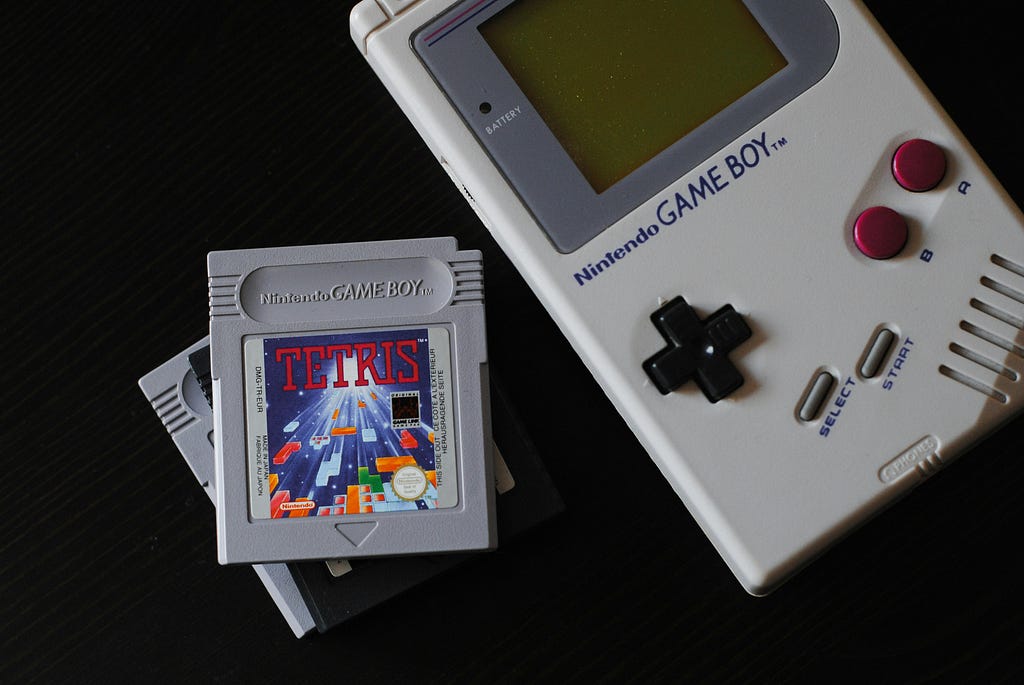
A beginner’s guide to Toy collecting: Part 3
The toy collecting dictionary Welcome to the third installment of our beginner’s guide to toy collecting. In this post, we’ll delve into the toy collecting dictionary, a crucial resource for any novice collector. Understanding the terminology is key to navigating the vast world of toy collecting. Toy collecting terms you should know: AFA (Action Figure Authority): A grading system for the condition of action figures. Articulation: The movable joints on an action figure. Bootleg: An unauthorized, unofficial copy or reproduction of a toy. Carded: A figure still attached to its original packaging card. Catalog: A comprehensive list of toys, often used by collectors to keep track of their collections. Chase Figure: A rare variation of a mass-produced toy, often produced in limited numbers. Complete: A toy that includes all original parts and accessories. Custom: A toy that has been modified or repainted by a collector. Die-Cast: Toys made from metal, often referring to cars or miniature models. Exclusive: A toy that is only available through a specific retailer or event. Holy Grail: A highly sought-after and often rare collectible that is the ultimate goal for a collector. Limited Edition: A toy that is produced in limited quantities, often making it more valuable. Loose: A toy that is no longer in its original packaging. Condition can vary. MIB (Mint in Box): A toy that has never been removed from its original packaging and is in perfect condition. MOC (Mint on Card): A toy that is still sealed on its original card backing. NRFB (Never Removed from Box): Similar to MIB, but emphasizes that the toy has never been taken out of its packaging. Playset: A set of toys designed to be played with together, often creating a specific scene or environment. Prototype: A pre-production model used for testing and marketing. Reissue: A modern re-release of a classic toy. Variant: A toy that has slight differences in packaging, color, or accessories. VHTF (Very Hard to Find): A term used to describe extremely rare and desirable toys. Now that you’ve mastered the basics of toy collecting, why not level up your knowledge with the exciting world of video game collecting? Dive into our next blog post to discover rare gems, pro tips, and the hidden treasures of the gaming universe. Click here and start your next adventure! A beginner’s guide to Video Game collecting: Part 1 A beginner’s guide to Toy collecting: Part 3 was originally published in Golisto on Medium, where people are continuing the conversation by highlighting and responding to this story.
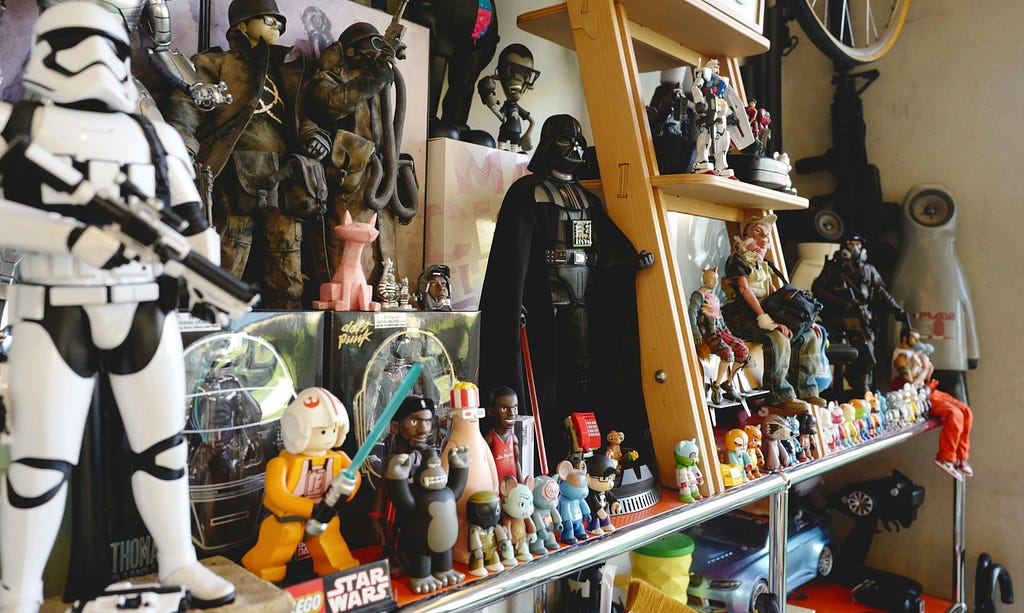
A beginner’s guide to Toy collecting: Part 2
What are you going to collect? Embrace nostalgia and start your toy collection journey Most collectors start their journey driven by nostalgia, yearning to recapture the excitement of their childhood. Whether it’s finally owning that Teenage Mutant Ninja Turtles sewer set you never received for Christmas or reliving the thrill of browsing endless rows of action figures, choosing what to collect is the first and most crucial step. Choosing affordable toy lines To kick off your collection without breaking the bank, consider focusing on affordable and classic toy lines. Iconic series like Masters of the Universe, My Little Pony, and Teenage Mutant Ninja Turtles offer a plethora of options that can quickly and affordably expand your collection. Remember, the cost can vary significantly based on the condition and grade of the toys, especially due to the increased popularity from shows like Toy Hunter. Starting small and building gradually Begin your collection with a few key pieces, especially those you cherished as a child. Avoid the temptation to buy in bulk initially. Focus on acquiring items that have personal significance and expand your collection gradually. Always familiarize yourself with key toy collecting terms to ensure you make informed purchases. The importance of keeping a list Maintaining a detailed list of desired items is essential, particularly when navigating large toy fairs. Amidst the overwhelming array of options, it’s easy to lose track of what you’re seeking. A well-organized list helps you stay focused and ensures you don’t miss out on acquiring the specific items you want. Watch out for bootlegs In recent years, there has been a surge in bootleg toys, particularly from China. Deals that seem too good to be true often are. This is a prevalent issue with newer lines like NECA’s convention-exclusive Teenage Mutant Ninja Turtles toys and other limited-edition items. Be especially cautious with rare and expensive vinyl toys such as KAWS and Mutant Vinyl Hardcore. Where to buy your toys Exploring your options While many guides suggest starting with eBay, seasoned collectors often seek alternatives to avoid the high fees and potential frustrations associated with big-name sellers markets. Here’s a breakdown of where to find the best deals and rare finds: Local toy collecting community: Engage with your local toy collecting community. Attend toy fairs, join Facebook groups, and participate in forums. Building a strong network can lead to dealers approaching you with items you’ve been searching for. Toy fairs and conventions: These events are treasure troves for collectors. They offer the chance to see and handle toys in person, negotiate prices, and find unique items that aren’t available online. Online collectors groups: Social media platforms and online forums dedicated to toy collecting can be invaluable. These communities often have members looking to sell or trade, and you can find items at more reasonable prices. Curated online marketplaces for collectors: For a more reliable and curated shopping experience, consider specialized marketplaces like golisto.com Our platform offer a broad selection of collectible toys with a focus on quality and authenticity, helping you avoid bad the high fees and inconsistent buyer experiences often associated with larger marketplaces. Enjoying the toy collecting hobby Above all, remember that toy collecting is meant to be a fun and rewarding hobby. If it ever starts to feel stressful or unfulfilling, take a step back and reassess your motivations. The joy of collecting lies in the thrill of the hunt and the satisfaction of finding that perfect piece to add to your collection. Hit part 3 and master the toy collecting lingo: A Beginner’s Guide to Toy Collecting: Part 3 A beginner’s guide to Toy collecting: Part 2 was originally published in Golisto on Medium, where people are continuing the conversation by highlighting and responding to this story.
